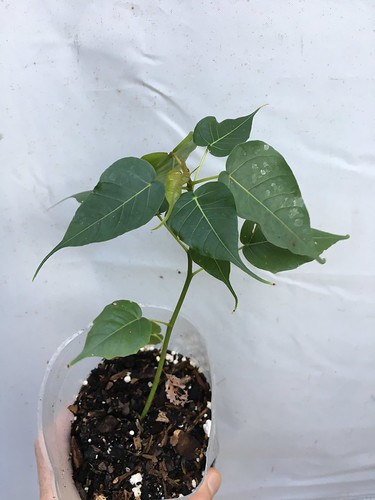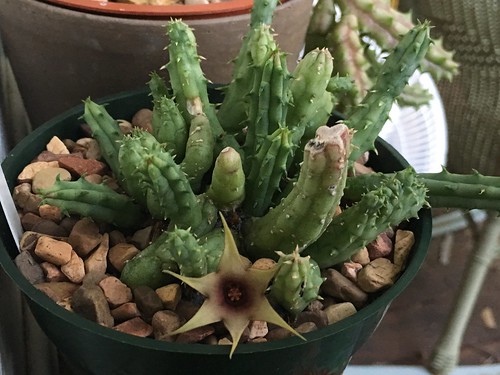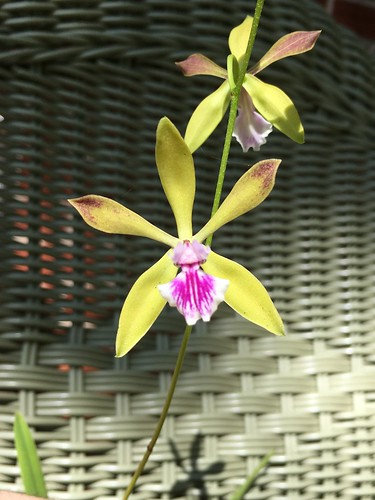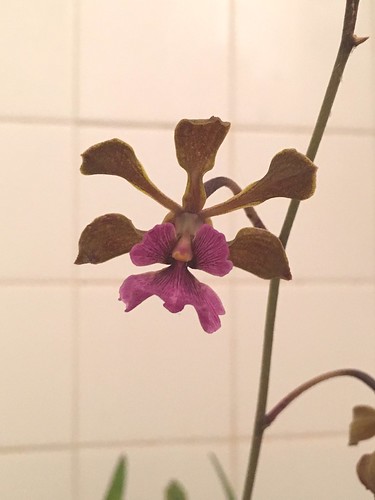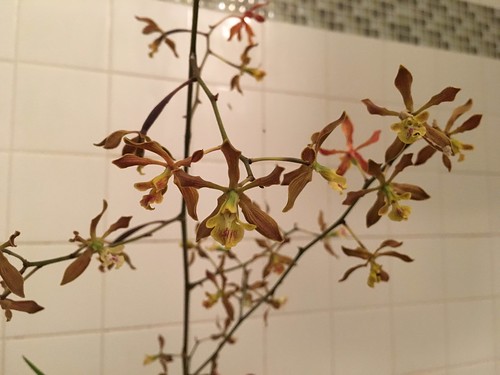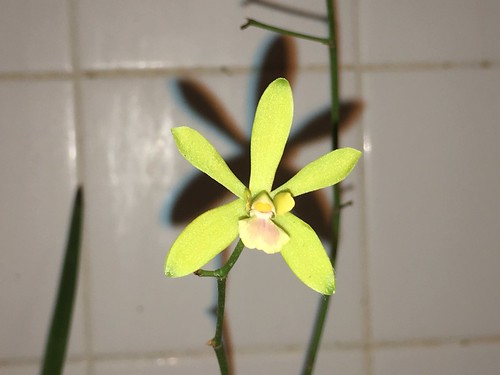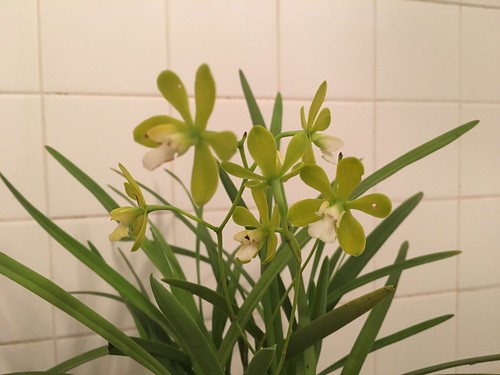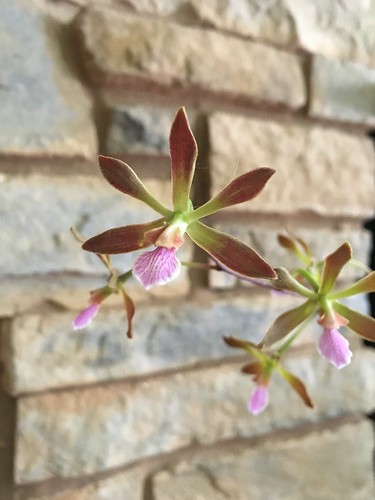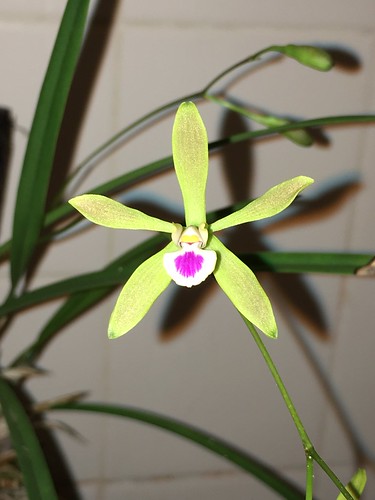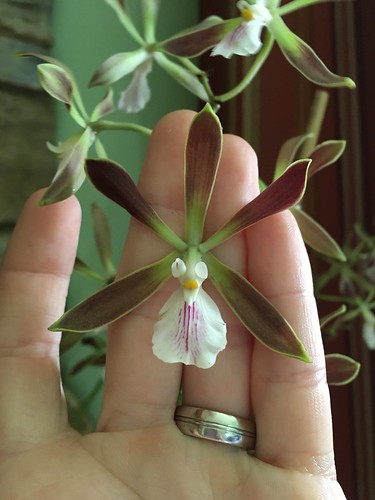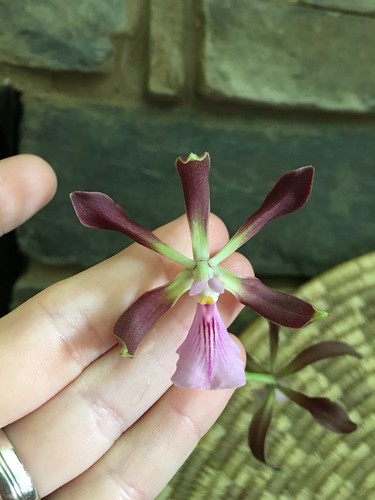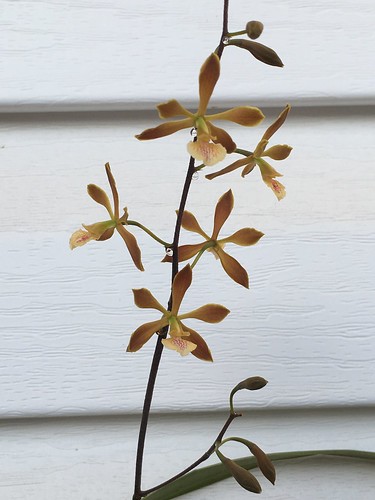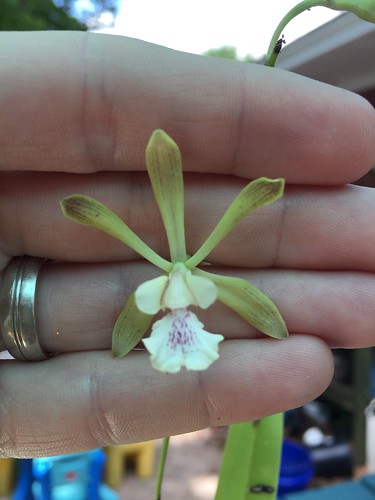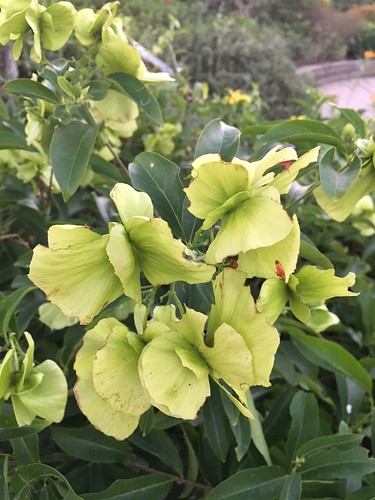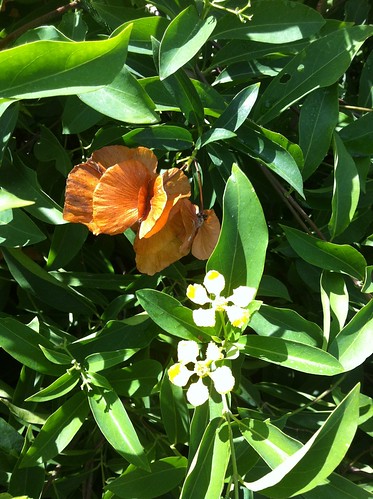While we were in Austin we visited Zilker Botanical Garden. There was a special event going on while we were there with local vendors with art, plants, and other things for sale. One of the vendors was a local nursery that had some rare plants for sale, including a small Frankincense tree about 6 inches tall, selling for $250! I talked to the owner and he said that it was a cutting from their parent plant, which isn't very large and that the cuttings are difficult to root. I bought a small Curry Tree for $6 for my friend who had been looking for one of these for years.
 |
The sun shines brightly through the canopy,
nearly preventing us from seeing the dino statue across the lotus pond.
|
 |
| Ammonite fossils are used as paving stones by the lotus pond. |
 |
| Posing in front of a waterfall in the Prehistoric Garden |
 |
| Alligator Plant (Acanthus montanus) |
We really enjoyed the Hartman Prehistoric Garden, which consists of plants from families that have been on earth for millions of years: cycads, ferns, palms. This garden was inspired by dinosaur tracks and an ancient turtle fossil that were found inside the gardens in 1992. At one spot there are paving stones that are actual ammonite fossils, which is really cool. They also have a bronze dinosaur statue in view across a pond.
 |
| Southern Dogface (Zerene cesonia) enjoying a Coreopsis |
 |
| American Snout (Libytheana carinenta) enjoying a Coreopsis |
The butterfly garden was rather unkempt looking, but the bushy flowering plants were absolutely covered in butterflies enjoying the nectar. I think most of the plants were Blue Mistflower (
Conoclinium coelestinum). We saw at least 10 species, likely a few more: Queens, American Snouts, Sachems, Gulf Fritillaries, Red Admirals, Monarchs, Pipevine Swallowtail, White-striped Longtail, Southern Dogface, and a couple of Skippers I didn't identify.
 |
Queen (Danaus gilippus) butterfly enjoying some nectar
from the Blue Mistflower (Conoclinium coelestinum)
|
 |
| Queen (Danaus gilippus) butterflies enjoying... each other. |
A few other quick things to note:
 |
| Coral Fungi, probably from the genus Ramaria |
This is not a plant, but I have admired photos of Coral Fungi before but not seen one in person. Along the path in one part of the gardens I noticed a bunch of these on the ground. So beautiful!
 |
| A real rock turned into an outdoor light along the pathway |
The gardens have these really cool lights along the path. They were not illuminated while we were there visiting in the daytime, but I noticed one when I was bent down inspecting the fungi. They are actual rocks - not those fake plastic ones - that have been cut in half and had lights installed in them. What a cool idea!
 |
Thaumatophyllum bipinnatifidum mislabeled as both a Philodendron (almost right)
and a Monstera (definitely not right).
|
It's not unusual to find plants mislabeled in a botanic garden, but it still surprises me every time I see it... In all fairness, this plant used to belong to the genus Philodendron and only recently moved to the new genus of Thaumatophyllum. But still,
Monstera deliciosa is a very different plant and in a separate genus.




























